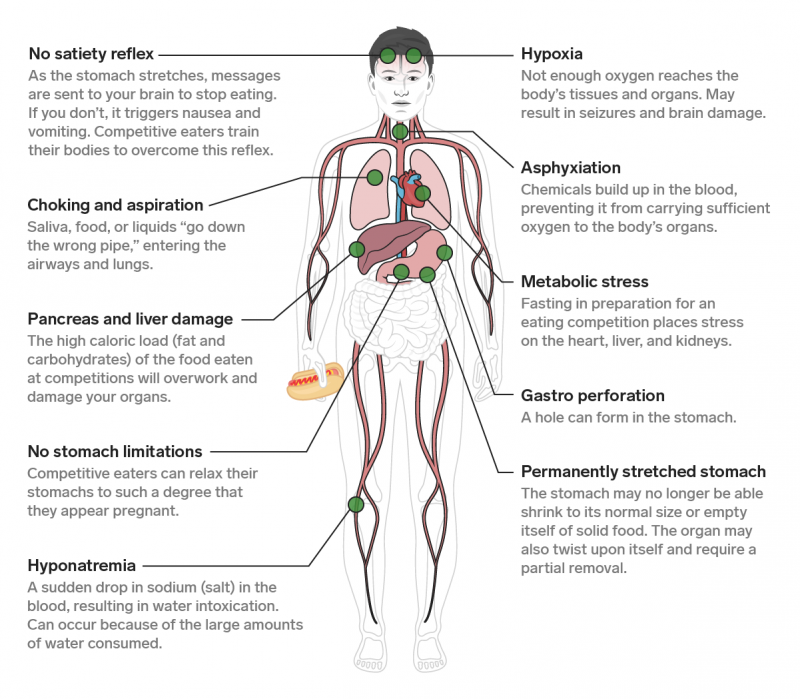- Joey Chestnut ate 71 hot dogs in 10 minutes on July 4, narrowly missing his previous record of 74.
- Miki Sudo also defended her title in the women’s hot dog competition, downing 31 dogs for her sixth win.
- Scientists have studied the bodies of competitive eaters like Chestnut and Sudo, and found that their stomachs don’t contract normally.
- Competitive eaters can relax their stomachs to hold more food, but the sport can take a toll on normal kidney, liver, and heart functioning.
- Visit Business Insider’s homepage for more stories.
Joey Chestnut has done it again: The 35-year-old competitive eater downed 71 hot dogs in 10 minutes to win this year’s Nathan’s Famous Hot Dog Eating Contest.
Chestnut narrowly missed his 2018 record, eating three fewer dogs than he did last year, though that’s still a mind-boggling average of 7.1 hot dogs every minute – more than one every 10 seconds.
In the women’s competition, Miki Sudo successfully defended her 2018 title, swallowing 31 hot dogs to win her sixth victory.
Many hot-dog contest victors dunk their buns in water before they eat them, and some competitive eaters even “jump around and wiggle their bodies” as they inhale dogs, Nathan’s website says.
"They're trying to encourage the food to slide easily down the esophagus and settle compactly in their stomachs," the site adds.

It's hard for those of us who don't see eating as a competitive sport to understand how the human body can perform such a feat (and manage to keep all the food down). But scientists have figured out a few key factors that allow a person's stomach to do the job.
A 2007 study published in The Journal of Roentgenology compared the body of Tim Janus, a competitive speed-eating champion who could consume 36 hot dogs in 10 minutes, to a non-competitive eater with a healthy appetite. Each man was given 12 minutes to chow down on as many hot dogs as they could.
The researchers found that during the competition, Janus' stomach stretched and distended, but it didn't contract at all. The "normal" eater's stomach performed in a near opposite fashion: he wasn't able to stretch his stomach as much, and it did contract. Stomach contractions are important because they help break down food in the body for digestion.
That was just one of a host of abnormalities that has been observed in competitive eaters. Here's how the sport can affect the body, from your brain to your bloodstream:

Update: This post was originally published on July 5, 2018. Molly Sequin contributed to an earlier version.










